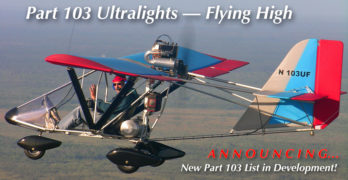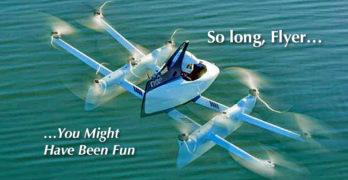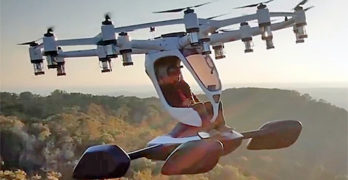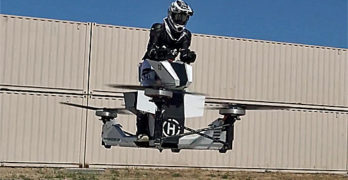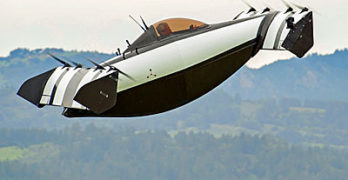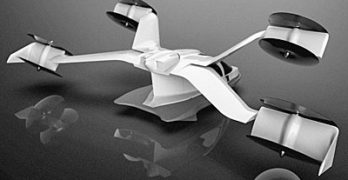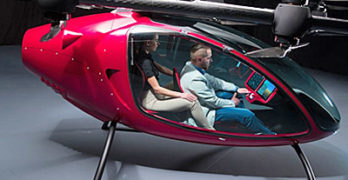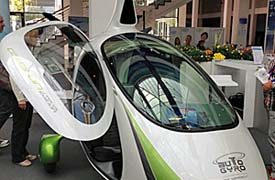UPDATED (again!) 12/11/20: Still refining the list. —DJ
A great many of you read the article about the new Part 103 List. Your enthusiasm plus lots of comments reflect the strong interest generated by these lightest, most-affordable, and fun-to-fly aircraft.
With input from readers and through more research, I have increased the draft list to the one you see below, now 53 producers strong! Honestly… I expect even more.
Many readers were surprised by the number of producers of these aircraft that too many pilots thought were dead and buried by Light-Sport Aircraft and FAA’s requirement that previous two-seat ultralight trainers had to leave paid flight instruction and become private aircraft.
As the list shows — and as my plan to attempt counting the number of aircraft built every year proves — Part 103 Ultralight Vehicles are indeed alive and thriving.
Keep Helping, Please!
If these aircraft interest you, please review the list and tell me of any additional producers I did not include.
Search Results for : multicopter
Not finding exactly what you expected? Try our advanced search option.
Select a manufacturer to go straight to all our content about that manufacturer.
Select an aircraft model to go straight to all our content about that model.
How To Account for Growing Part 103 Ultralight Sales? Here’s My Plan (But Please Help!)
Pilots around the world are aware of Part 103 Ultralights but many have a blurry view of the industry that produces these aircraft. Most are unaware how well this often-overlooked segment is doing in recent years, even during Covid 2020.
FAA refers to these lightweight flying machines as “ultralight vehicles,” a term that creative rulewriters adopted in the early 1980s to avoid heavy regulations typical for “aircraft.” This wording helped the young industry grow and develop. It worked so well the regulation has not been altered for decades.
Even ultralight enthusiasts in America and other countries may not be fully aware how popular ultralights have become in recent years. When Light-Sport Aircraft came on the scene in 2004 they knocked out the ultralight two-seater training fleet. Many believe ultralights never recovered.
How wrong they were, yet who can blame them because no one truly knows how many ultralights are being built and sold these days.
DeLand Finale; Tecnam Success; and… End of Kitty Hawk’s Flyer (Battery Problems, Fires)
As we rush toward the Christmas holiday period and get excited about a new season of flying (after a few more weeks of snow and ice), we have some news to report.
Fortunately, you can stay where it’s warm and just watch — thanks to new videos from DeLand. While I missed my YouTube partner Videoman Dave at the show, I managed to fly solo and shoot video interviews and more on my own. Thank goodness, Dave remains at his video editing equipment and I am pleased to post a couple fresh videos below.
A mere three weeks since Deland Showcase 2019 ended the airshow season for the year, fresh videos are flowing to provide information and entertainment.
DeLand Race Around
We started these quick-tour videos a few years ago and to a certain segment of visitors and viewers, these are hits as they show most of the airplane exhibitors plus give a sense of the event.
Latest Update on FAA’s Plan to Change Light-Sport Aircraft Regulations — July 2019
Many have asked about progress on FAA’s proposed rewrite of the Light-Sport Aircraft regulations. Following a lengthy teleconference at the end of June 2019, LAMA, the Light Aircraft Manufacturers Association, provided another update.
The update to industry covered a lot of ground but here we’ve tried to make it a quicker read.
Two key points: First, FAA is in the early stages of this rulemaking; at least minor changes are certain. FAA itself does not know all the specific details of the proposed rule at this time.
Secondly, the steps reported here come from actual rule writers but their effort has support from top FAA leadership. Driven by a Congressional mandate we know this will go forward.
LSA Is a Success Story
For 15 years Light-Sport Aircraft and their producers have proven themselves, LAMA argued. FAA concurred; the agency has often referred to the safety record as “acceptable,” reasonably high praise from regulators.
Brave New Year — Will Aviation Finally See the Biggest Change Since Orville and Wilbur?
Throughout the 115 years since the Wrights took their Flyer into the skies for the first time, aviation has enjoyed remarkable progress. Wing design, engine design, instrumentation changes, safety enhancements… we have witnessed many dramatic changes in how aircraft ply the skies and do so with increasing efficiency and with less danger to occupants or those on the ground.
All of us who enjoy flight know much about this, but things are changing and perhaps fast enough to push many of us current-aviation experts into a discomfort zone.
As you have seen on this website and just about any media outlet reporting on new developments, multicopters are looming ever larger on the horizon. More and more startups — many funded with tens or even hundreds of millions of dollars! — are jumping into the game. Huge aviation names such as Boeing and Airbus are deep into work on new-style flying machines.
Flying Motorcycle Scorpion Earns “Approval” from FAA
So far, at least three entries* in the multicopter sweepstakes qualify themselves as Part 103 ultralight vehicles. I’m guessing that lead FAA rule writer, Mike Sacrey, never envisioned this idea back in 1982 when he and his team created aviation’s least-regulated aviation sector. In those days, FAA had only recently moved away from requiring that such aircraft demonstrate foot launching.
Mike would have needed a genuine crystal ball to foresee something like Scorpion 36 years ago. Let’s briefly put this in perspective — most readers had yet to buy their first computer; we were still 13 years away from the World Wide Web; it was a quarter century before the iPhone; even Light-Sport Aircraft were 22 years in the future.
Had Mike written a regulation back then to include multicopters like Scorpion he would surely have been relocated to some remote post where his craziness would not be obvious.
Infotech Meets (Part 103) Ultralight Aircraft. Big Deal! Or, So What?
This article again delves into the changing face of aviation and in this case within the Part 103 Ultralight Vehicle sector.
Infotech in Part 103 ultralight vehicles means far more than GPS or even synthetic vision digital screens (imagine an iPad mated to a Levil box … remarkable stuff and for very little money). However, digital avionics are not the point of this story.
In the last few days, a formerly Canadian company, Opener, announced their new eVTOL (electric vertical takeoff and landing), the second developer I know of to adopt Part 103’s simplicity and freedom. Like Kitty Hawk’s Flyer*, the rather unusually-named BlackFly also calls itself an “ultralight,” more precisely meaning an ultralight vehicle that can operate under Part 103. What you might like about this, compared to more than a dozen “air taxi” designs, is that BlackFly appears aimed at recreational flyers (as does Flyer).
Weird? Or, Wonderful? More Companies Move Toward eVTOL …Will Sport Pilots?
What on Earth is going on in Airplane DesignerLand? Are we headed for a bifurcation, a parting of the ways among those engineering the next generation of aircraft? Perhaps. Will this affect you? How do you feel about non-fixed-wing aircraft?
I am searching for a term to generically describe these emerging flying machines; “drones” doesn’t quite do the job. More of these seemingly-weird-looking machines seem to pop up every day.
Prior experience suggests that most will never make it to market. Ones that do succeed in the eVTOL or electric-powered aircraft market may not even exist today. For that matter, it is far from certain that this will ever turn into a market, though given the huge amounts of money pouring into research projects, it seems nearly inevitable (to me) that some will survive and perhaps have a major impact on flying, both for transportation and for sport or recreation.
Along this vein, before and at Sun ‘n Fun 2018, I spoke to officials from BRS parachutes.
Battle of the Giants — Boeing and Airbus Developing Small Aircraft (Even Single Seaters)
While I doubt airliner behemoths Boeing or Airbus are aiming to create aircraft you might buy, their work along with other developers, may nonetheless lead to something new in the future for recreational aircraft pilots and buyers.
According to a report in Wired magazine, “On the morning of January 31, eight buzzing rotors lifted a black bubble of an aircraft off the ground for the first time … Vahana Alpha One spent 53 seconds aloft, under its own power and autonomous control. It reached a height of 16 feet. The flight may not sound like much, but the team from Airbus … and aerospace experts say such flights of experimental aircraft mark the start of a fundamental change in the way we get around.”
Writer Jack Stewart goes on to state, “Alpha One … is a full-scale demonstrator of a single-person, vertical take-off and landing aircraft. The idea … is to remake the way we fly.
Aero 2014 Review … Starting to Think AirVenture
Life has settled down a little after the rush that began at the end of March. Five weeks back, Sun ‘n Fun was approaching to kick off the season of recreational flying.
Aero in Germany followed with only a one day break before boarding the airliner to Europe followed by plenty of follow-up and contemplating the hot and fast action. With a couple weeks of perspective and to answer a common question — How does the industry look in Europe? — I have some final observations.
I found five areas to consider and list them below. Among all the many wonderful aircraft I saw, two particular subgroups stood out for me personally, one for its sheer success and the other for its subtle return to a higher interest plateau.
I refer first to gyroplanes and secondly to, well … what to call them? How about simply “ultralights?” Even that word isn’t right because Ultralight in Europe means something quite different from ultralight (vehicle) in the USA.



